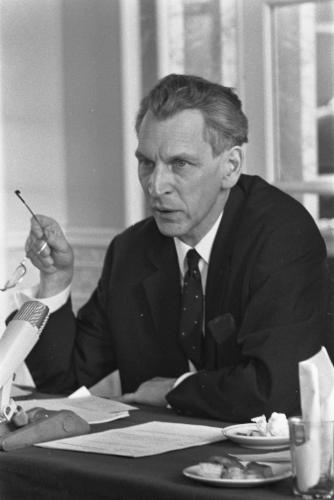Kwartet voor twee violen, altviool en violoncel op. 44
By Marius Flothuis
Details
Allegro impetuoso
Lento
Allegro appassionato
Allegretto leggiero
Finale (Poco adagio)
Program note: This string quartet is dedicated to my wife. It adheres rather closely to the "germ-cell technique" which, in Holland was inaugurated by Willem Pijper (1884-1947). In all its five movements a motif of two notes only (a descending semitone) links up all the themes.
When this work was first performed, one of the listeners said about the final movement: "at the end everything comes right". This was a very sensible observation and it says more about the "contents" of the work as a whole than I can do when describing the course of the musical ideas. The attentive listener will be able to notice that in this case the usual "first movement" is split up into two movements, the first and the third; that the Allegretto leggiero is an intermezzo taking the place of the usual Scherzo; and that in the final movement elements of the preceding ones recur, which means that it sums up all that happened before and thus leads on to a more balanced state of mind and soul in the concluding Andante maestoso. Especially in the last movement the germ-motif appears in ascending form and comprises a whole tone instead of a semitone. - MARIUS FLOTHUIS
Amsterdam


